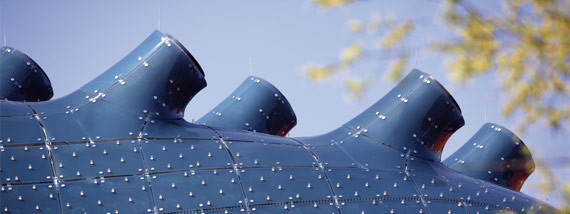Plenary LecturePlenary 9 Alexander K. Belyaev (RAS St. Petersburg): High-frequency dynamics of structures Thursday, April 21, 2011, 11:15 – 12:00 There exist many different types of dynamics. The dynamics of rigid bodies is associated with zero eigenfrequencies whereas the dynamics of solids deals with the natural frequencies of the solid under consideration. Thermodynamics is also a relevant dynamics in which the frequencies of thermal motions are essentially higher than the frequencies of mechanical vibrations. The dynamics of rigid body can be derived from dynamics of solids and vice versa hence dynamics of rigid bodies and the dynamics of solids can be considered as two neighbouring dynamics. The difficulties encountered when attempting to link the dynamics of solids to thermodynamics indicate that there exists a gap between these theories which "reserves" a place for a new dynamics. The latter is in fact a low frequency limit of thermodynamics and a high frequency limit of the dynamics of solids. The new dynamics that fills this gap will be referred to here as high frequency dynamics, and the corresponding frequencies will be referred to as high frequencies. The objective of the presentation is to prove the existence of the new dynamics. To this end: (i) new qualities of the high frequency dynamics compared with vibration theory and thermodynamics are indicated; (ii) the governing equations are derived; (iii) the boundaries of the high frequency dynamics are found. Two basic approaches to the high frequency dynamics of complex engineering structures are proposed. The first one is high frequency structural analysis. Its boundary value is derived from vibration theory under the assumption that the structures at high frequencies possess some thermodynamic properties. The second approach is the vibrational conductivity approach to high frequency dynamics which is a generalisation of the Statistical Energy Analysis. The high frequency vibration is shown to be described by a boundary value problem of the heat conduction type. The following examples of application of the high frequency dynamics to industrial problems will be discussed: |

© 2010 TU-Graz, Website by phongjim.com




